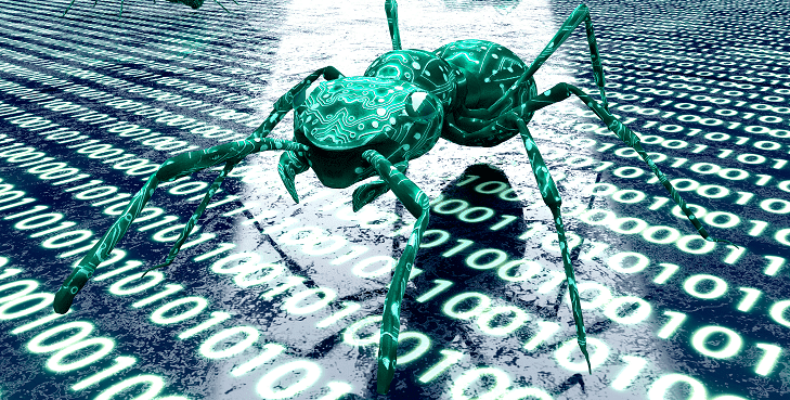Blog

5 Shocking Facts About Extortionware You Need to Know
Malware is available in various forms and one of the examples of which is extortionware. Ransomware is something you could be familiar with more than that. Although both have similarities, they are different. Extortionware is the most recent stage in ransomware’s evolution. Now cyber hackers are using ransomware incidents more to steal massive amounts of sensitive data. Let’s dig into the article to learn what it is, how it works, its different types, how to prevent this, etc.
What Is Extortionware?
Extortionware is a hacking way through which cyber attackers harm the target when their demands are not met. These types of attacks are highly targeted. Their main aim is to harm those industries which have to handle high-value data; for example Educational, financial and medical sectors, which need to deal with huge amounts of sensitive data.
Types of Extortionware:
Some types of this attack are as follows:
-
Release Of Compromised Data:
Cyber attackers can harm a target system by getting unauthorized access. After exfiltrating sensitive information, they threaten people with selling the stolen data if their demands are not met. These stolen sensitive data can be financial records, an individual’s intellectual property, or information about a company’s employees or customers. This kind of Extortionware is known as “doxware.”
-
Threat Of DDoS:
Cyber attackers launch DDoS or distributed denial-of-service attacks to disrupt an online service or the website they have targeted. In order to overwhelm a web server, threat actors use a huge network of compromised systems. The attack can block legal traffic. Besides, it disables the normal online activities of an organization. It has been more than twenty years since these attacks have been around.
Why Do Attackers Use Extortionware?
This attack extorts victims for money. In such cases, cryptocurrency is used for payments. This way is faster than fiat currencies. Remember that cyber extortion is not new in the market. It has become popular among ransomware groups in recent years. The reason is that cyber criminals are using new strategies to pressurize victims more.
How Does It Work?
The major aim of this hacking form is to infiltrate a company’s digital resources using traditional malware. As soon as the cyber attackers get access, they will steal the victim’s data. Then, they use this information to blackmail victims. By contacting victims, threat actors threaten them by saying that they will release the vital information of the victims to the public if the victims do not fulfill cyber attackers’ demands.
How Risky Is Extortionware?
You can perform frequent offline data backups to reduce the risks related to this kind of attack. So, businesses should perform backups to restore their encrypted data. You need to know that offline backups have no value if threat actors threaten victims to release data. So, preventing this from happening is the best option. Therefore, compared to ransomware, it is a bigger risk for businesses.
Examples of Extortionware:
It is not as well-known as ransomware; however, let’s see the examples of extortionware.
Doxing is known as “doxxing”. This one is one of the instances of cyber extortion. In this case, cybercriminals can release the private information of victims. Software that DDoS attacks use is possibly to be classified as extortionware.
Information leak from Ashley Madison is the most high-profile case. This one is an online dating service that is beneficial for affairs. But it was 2015 when the site was attacked and threat actors stole user’s personal information. Later, they published the stolen data like names, bank details, email IDs, etc, in two tranches. As a result, an online extortion arose against former Ashley Madison users.
What is The Difference Between Ransomware And Extortionware?
The “extortionware” form refers to modern ransomware attacks, like a data theft component. In this case, you should know that data theft can be done in many ways. Although these two terms “Ransomware” and “Extortionware” are used interchangeably, let’s see the difference between them.
Ransomware: This type of malware does not allow users to access their personal files or systems. In this case, the attackers force the victims to pay a ransom amount to restore access.
Extortionware: This attack involves all forms of cyber extortion. Ransomware groups utilize extortionware to use stolen data as a weapon and blackmail victims and force them to pay to restore data and access.
How to Prevent an Extortionware Attack:
You can apply the most effective ways of ransomware prevention to prevent this type of attack. As a victim of this type of attack, you can restore encrypted files from offline data backups so that you don’t need to pay the ransom.
If you want to keep cyber attackers away from accessing your system and gaining sensitive data, preventing the attack from occurring is the only way.
-
Privileged Access Management:
The major reason why organizations face most cybersecurity incidents is human error. It could happen that employees of the organization are experts. But if there is even a small security mistake, organizations may have to face these kinds of attacks.
Privileged access management is capable of limiting administrative IT capabilities to trusted users. It makes sure that authorized users are the only ones who are capable of entering, changing or updating information storage systems. This way helps to eliminate potential risks. But if you are someone who wants to enhance security, then this prevention is an excellent way.
-
Data Encryption:
It is an effective solution to prevent this hacking process. While it is simple to set up, it can prevent extortion. If you are one of the trusted recipients, you are capable of decrypting files with your key. As a result, threat actors can not use the stolen data.
It prevents threat actors from stealing information. But you don’t get 100% security coverage as guaranteed in any approach. It is the reason why you should go through the encryption process. This way enables organizations to protect their consumers, employees and themselves despite having fallen victim to this kind of attack.
-
Network Segmentation:
By applying the process, companies ensure that threat actors can’t access the crucial files or sensitive information. The impact of cyber attacks can be minimized by separating the network into subnets. So, organizations can have extra time to send responses to threats. Thus, they can reduce potential adverse effects more accurately. This prevention method allows internal devices to communicate without any obstruction.
With the help of this prevention technique, businesses are able to limit access to sensitive data by setting up more user restrictions. Due to the enhanced control feature, businesses can detect unusual traffic and deal with the threat issues.
-
Extortionware Training:
Training that is specific to this type of attack is essential for a workplace to understand how to prevent this type of attack. Once an employee makes a small mistake, the risk of being attacked will increase. Around 30% of ransomware attacks occur when people click on malicious email links.
In order to reduce the risk of these types of attacks, it is necessary to learn how people should identify extortion attempts and respond to them. If you have a business, you are capable of setting up routine mandatory meetings to discuss the potential threats and remind the employees to adopt the best cybersecurity practices.
-
Network Traffic Monitoring:
In order to avoid the potential extortion attempts, organizations have to track network traffic. The reason is that cyber criminals may reveal themselves via unusual activity logs. With the help of the cybersecurity team, you can recognize the security concerns. Addressing the security concerns is important before they become serious problems.
AI helps them to streamline network traffic monitoring. Besides, a deep learning model helps in analyzing real-time activity and by doing so ensures that you can avoid potential threats. This process is able to detect complex data patterns which humans can not see.
The Bottom Line:
Extortionware refers to a cyberattack type that cyber attackers use to threaten a target when their needs are not met. Generally, to nullify backups and force the victims to pay, ransomware groups use extortionware. Preventing the initial compromise is the only way that can be followed to stop it.




